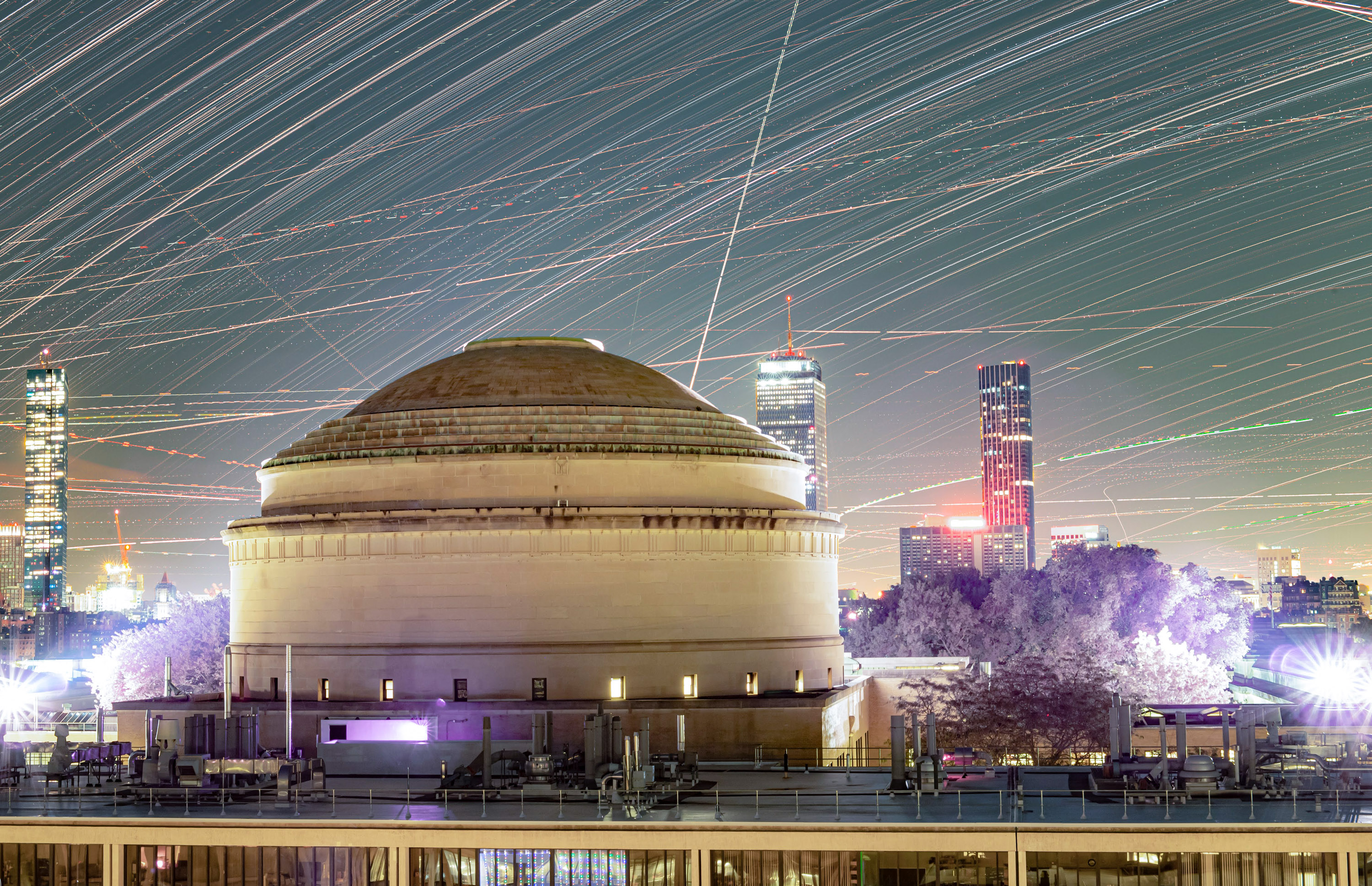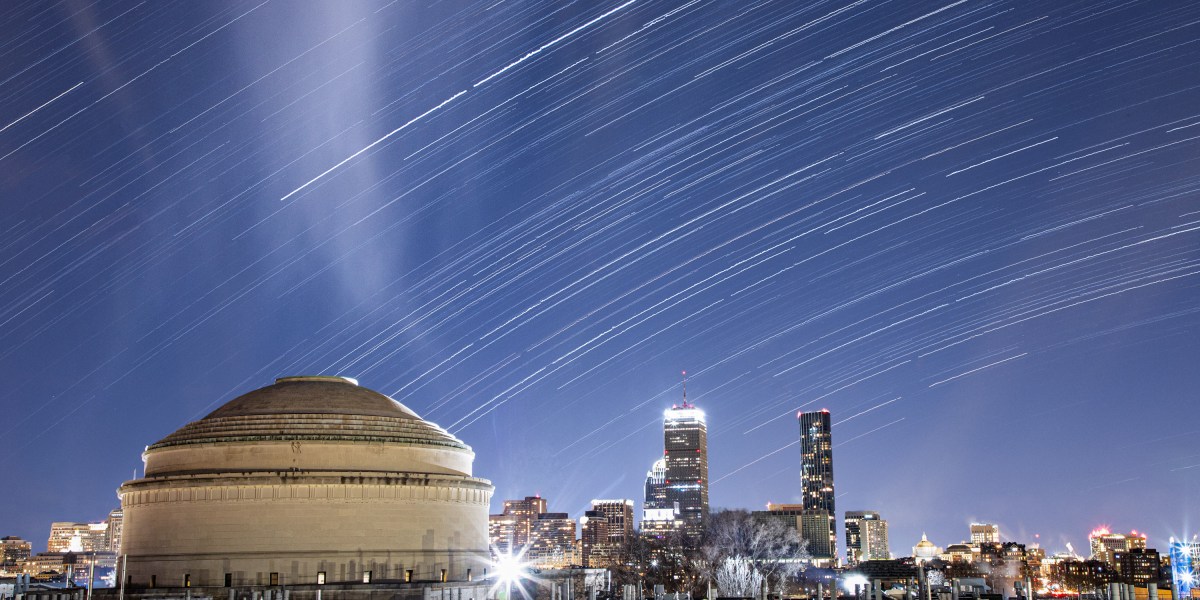By day, Evan Kramer, SM ’22, works on his PhD in the Aero-Astro Space Systems Lab, developing a satellite tasking algorithm. (His goal is to efficiently tap into a network of satellites with synthetic aperture radar sensors, which can see through all weather and illumination. This would let people quickly image a specific point on Earth in the wake of a natural disaster or other emergency.)


The ISS passes over the aero-astro complex (left) and the Central Utilities Plant, captured by multiple half-second exposures at half-second intervals.
But at night, there’s a good chance you can find Kramer on an MIT rooftop, capturing the night sky of Cambridge as you’ve never seen it before.

Kramer’s interest in astrophotography started in high school, when he was looking for a way to convince his friends that observing objects like Jupiter and the moons of Saturn with a telescope was cool. Then he branched out into landscape astrophotography and delved into capturing ultraviolet and infrared as well as visible light.


Light pollution makes astrophotography in urban environments tricky, but it’s possible with filters and a lot of planning. Kramer composes images with familiar features in the foreground to get people’s attention and make them wonder how they were taken—and question their assumptions about what can and can’t be seen in the urban night sky.
Source link

